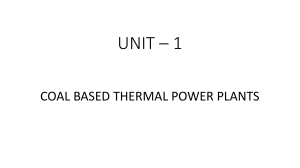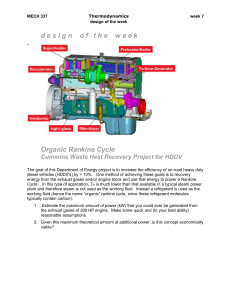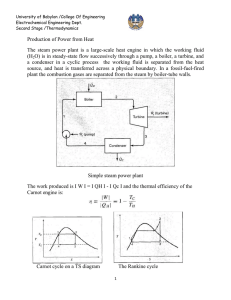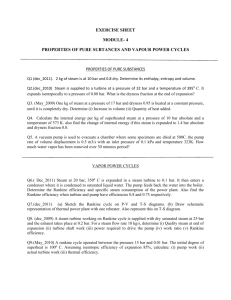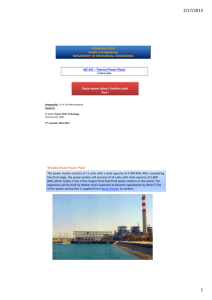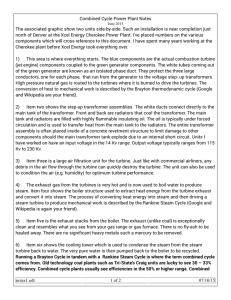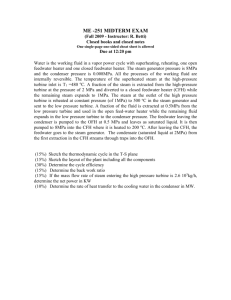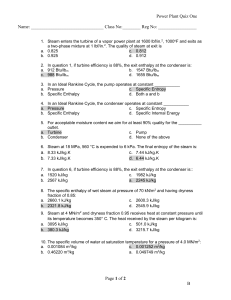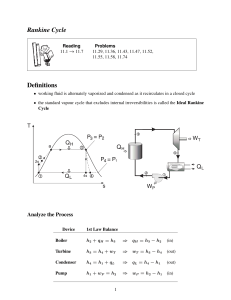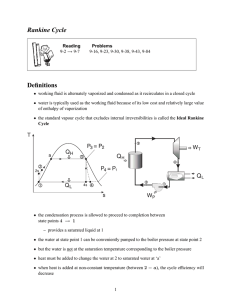Thermodynamics I
advertisement
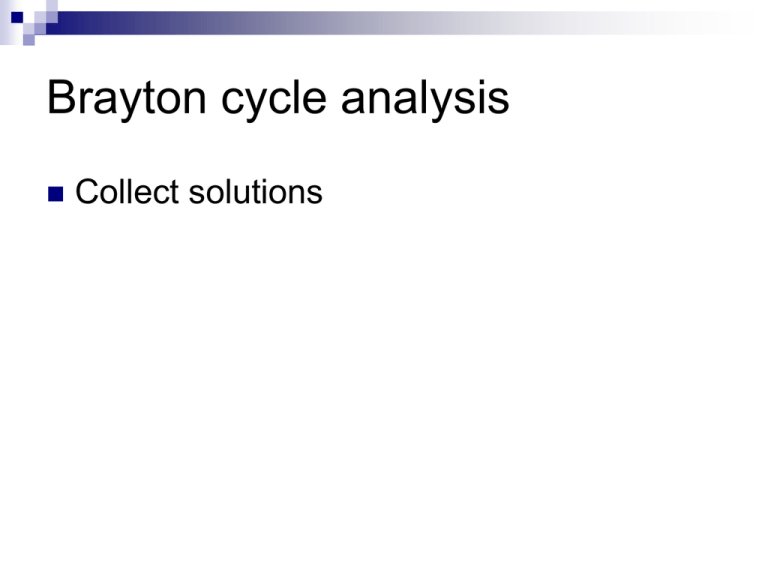
Brayton cycle analysis Collect solutions Energy report Due 4/16; 15% of grade Select one of the following energy generation processes • Nuclear power • Solar power • Wind power • Fuel cell Energy report Prepare a report supporting your choice as the most promising energy source for the future. Rankine cycle 1 → 2 isentropic expansion; turbine 2 → 3 constant pressure heat rejection; condenser 3 → 4 isentropic compression; feed water pump 4 → 1 constant pressure heat addition; steam generator Cycle analysis Each process a control volume: use h & s as needed Limited information on compressed liquid Net work of cycle Thermal efficiency bwr Cycle improvements Higher pressure Lower pressure Superheat Rankine Cycle Water is the working fluid in an ideal Rankine cycle. Pressure & temperature at the turbine inlet are 1600psi & 1100oF. Condenser pressure is 1psi. Mass flow of steam is 1.4x106 lbm/hr. Cooling water experiences a temperature increase from 60oF to 80oF. Find the net power of the cycle (Btu/hr), the thermal efficiency (%), and the mass flow rate of the cooling water (lbm/hr). Mollier diagram h vs s Isentropic turbine operation Isentropic efficiency Rankine cycle Into turbine: 10MPa & 580oC Condenser: 6kPa Isentropic efficiencies • Turbine – 85% • Pump – 82% Find thermal efficiency Innovators Steam engine efficiency – William Rankine Steam engine rotary motion – James Watt Steam turbine – Charles Parsons Reheat Rankine cycle: ideal Add reheat station amics 6E / Fig08_07 16 | 17 | 18 | 19 | 20 | 21 | 22 | 23 | 24 | 25 | 26 | 27 | 28 | 29 | 30 | 31 | 32 | 33 Regeneration Open feed water heater Closed feed water heater Indirect heating More complex More expensive Lower heat transfer rate Closed feed water heater Feed forward Feed back - trap

